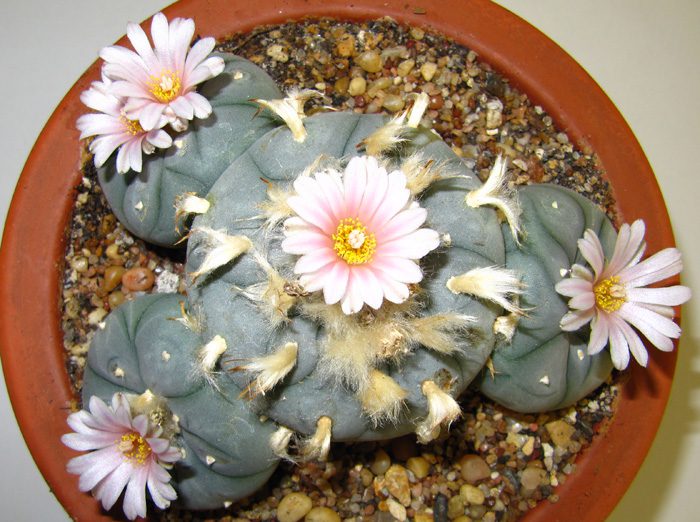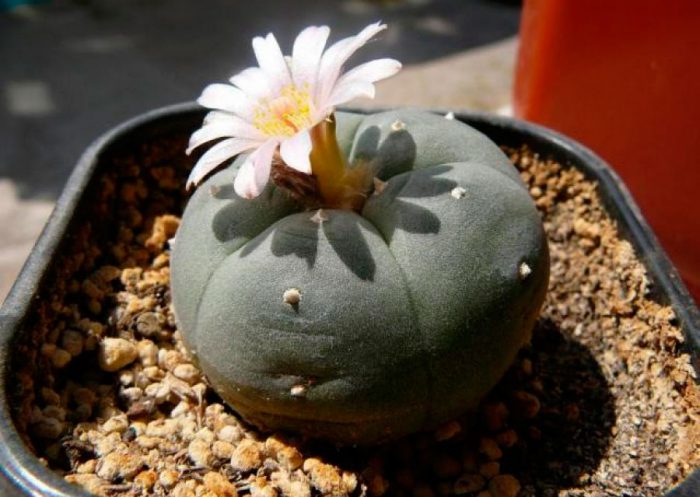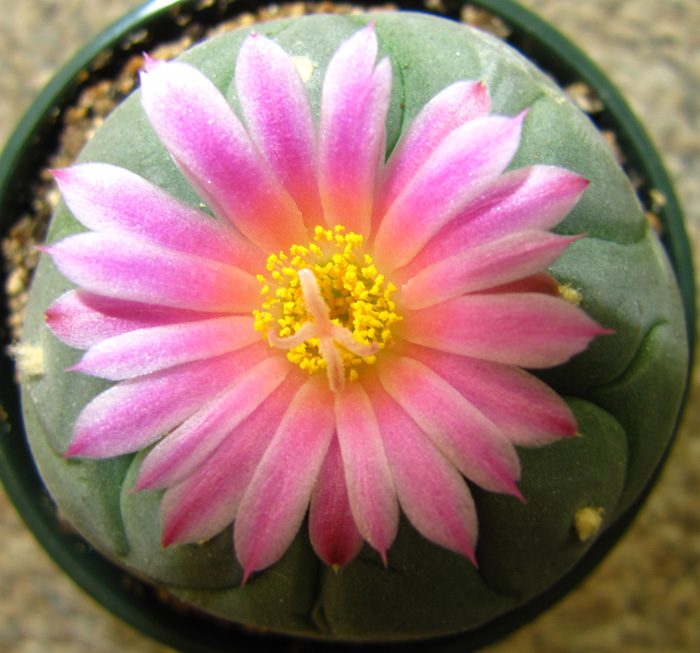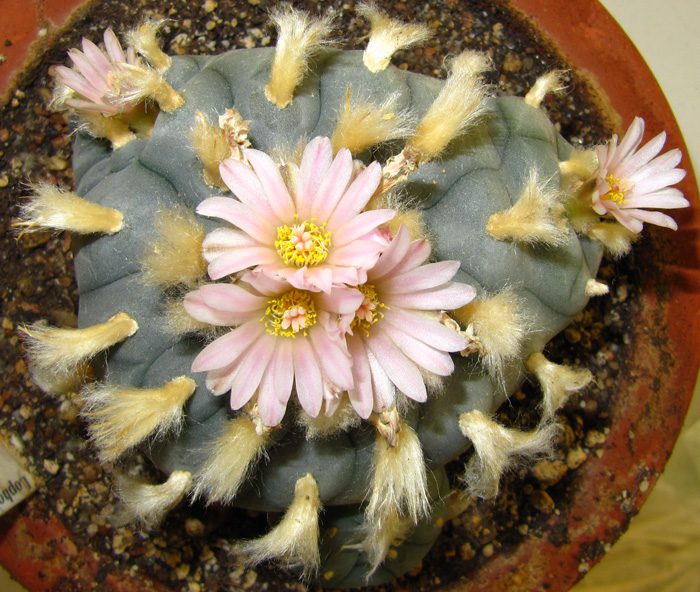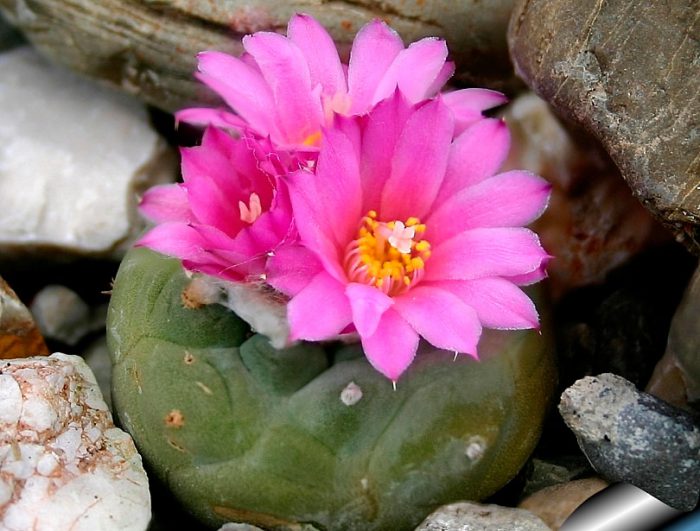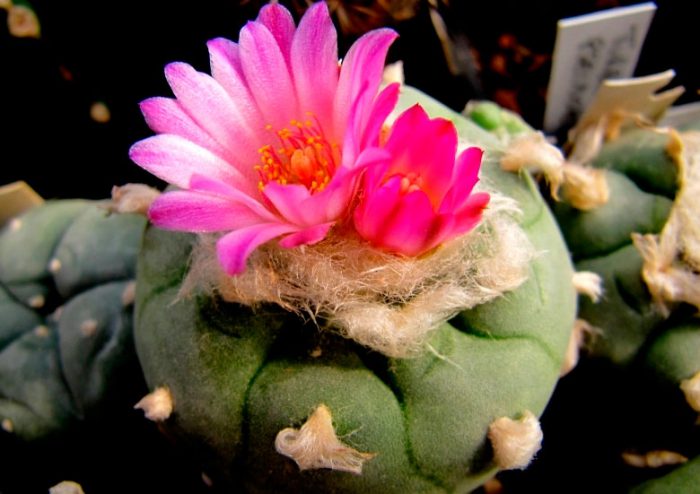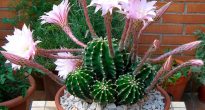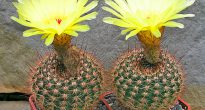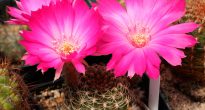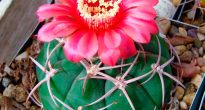Genus lofofora (Lophophora), which is also called peyote, is of particular interest among the numerous members of the Cactaceae family. According to various sources, this genus unites from 1 to 4 species of cacti. In nature, they can be found on low mountain slopes in dense bushes in Mexico, as well as the United States.
Of all the representatives of the cactus family, this plant stands out for its extremely unusual juice composition, which contains a variety of alkaloids. The juice can have a healing and tonic effect on the human body, but only if used in small doses. When consumed in large quantities, it can cause hallucinations. In this regard, the cultivation of such a plant is banned in a large number of countries around the world.
This plant is divided into species most likely by the chemical composition of its juice. For example, in the lophophora spreading, pellotina is produced most of all, and in the lophophora Williams, mescaline predominates. Outwardly, the species have practically no differences. However, a large number of specialists divide this plant into species precisely according to these characteristics. But many experts note that a cactus of one species may show signs of a completely different species.
The lophophore cactus has a stem in the form of a slightly flattened ball, which reaches 15 centimeters in diameter. This green-blue fleshy and rather smooth stem has a soft and velvety surface. One might get the impression that it consists of separate convex segments that have grown together and swollen. There can be as many as 5 of these segments, while the upper part of the cactus seems to be divided into 5 equal parts (ribs), or a lot. In this case, many bumps can be found on the stem of the plant. Among the large number of cacti, you can see specimens that seem to bristle with pimply combs.
In the central part of each individual segment, there is an areola, from which many hairs emerge, collected in a dense bundle and colored in a straw color. In an adult specimen, most of the hairs are located directly at the apex, since there are growing young segmental lobes of the cactus. In springtime, flower buds form in such places. Blooming is observed in summer. Tubular, semi-double, multi-petal flowers are not very large in size, about 2 centimeters in diameter. They can be painted in various color shades from pale red to pure white. When the plant fades, it produces red-pink two-centimeter fruits, which contain small black seeds.
This type of cactus stands out among the rest and for its massive turnip root, which has a large number of rather thick processes. The diameter of this root is almost equal to the diameter of the stem itself; by the way, all available children are taken into account when measuring. The root is also very long, so its length is usually greater than the height of the stem.
Lophophore cactus care at home
This plant is quite successfully grown indoors. However, in order for a cactus to grow and develop correctly, you need to provide it with suitable conditions.
Illumination
Lofofora needs bright light, but at the same time it must be diffused. You should not allow direct rays of the sun to hit the surface of the cactus, as this may cause the stem to partially change its color to red, and the plant itself will slow down development and growth.
Temperature regime
Moderate air temperatures are best suited for lophophora in summer. It can withstand a fairly high temperature (up to 40 degrees). In winter, this plant should be rearranged to a cooler place, where it will not be higher than 10 degrees, but it should be borne in mind that during the entire winter period it also needs good lighting.
How to water
The watering schedule depends on the temperature in the room, the time of year, as well as on the state of the substrate. In the summer, watering is carried out 1-2 days after the substrate in the pot has completely dried out. At the end of September, the cactus is no longer watered at all. Watering again begins only in the month of March. If, during a cold winter, the lofofora continues to be watered, then rot may appear on it.
Humidity
Feels great with low humidity in a city apartment. Additional moisture is not required.
Earth mix
A suitable soil should be loose, water and air permeable, and neutral in acidity. In order to choose a good soil mixture, you need to take into account that it should contain 1 part of the earth saturated with nutrients and 2 parts - various loosening additives. So, to prepare a suitable soil mixture, you need to combine turf soil, brick chips and perlite, which must be taken in a 1: 1: 2 ratio. Experienced flower growers also recommend adding a small amount of bone meal to the soil.
Due to the fact that the cactus has powerful roots, then the pot must be appropriate, or rather, high. Remember to drain well. A thin layer of fine gravel should be spread over the soil, while they need to cover the root collar of the cactus.
Top dressing
Top dressing is carried out only during the period of intensive growth, once every 4 weeks. To do this, use special purchased fertilizers intended for cacti.
How to transplant
While the lofofora is young, it is transplanted once a year in the spring. A matured plant should be subjected to this procedure only as necessary and only after the root system ceases to be placed in the pot. During transplanting, you can trim the roots, but no more than ¼ part. After cutting, it is recommended to cut the cuts with charcoal and dry thoroughly. The cactus can then be transplanted into a new pot.
Reproduction methods
The easiest way to grow a cactus is from seeds. They can be sown all year round. At the same time, you will find instructions for growing seedlings on the package with seeds.
You can also propagate lofofora and "kids". To do this, they are carefully separated from the mother plant in the autumn. Then the "kids" should be placed on a layer of perlite and kept in the same way as an adult cactus in winter (do not water).With the onset of spring, the "kids" should have roots. Transplant them into permanent pots.
Pests and diseases
This plant almost does not get sick, and harmful insects do not settle on it. Often, flower growers are concerned that the lophophore seems to stop growing. However, this is quite natural, because this plant is slow-growing and the growth of its stem is only 5-10 millimeters in 1 year.
Note! Lofofor Williams is prohibited from growing on the territory of the Russian Federation. At the same time, legislatively, criminal liability occurs if more than two copies of the plant are grown.
Main types
There is a classification dividing this plant into several types:
Lophophora Williams (Lophophora Williamsii)
The stem reaches 7 centimeters in height and 12 centimeters in diameter. Pinkish-white flowers. There are several forms, namely: five-ribbed, deceiving, multi-ribbed, bushy and comb.
Lophophora Fricii (Lophophora Fricii)
The stem is 8 centimeters high and 12 centimeters in diameter. Carmine red flowers. There are 14 spiral ribs.
Lophophora spreading (Lophophora diffusa)
The green-yellow stem reaches 8 centimeters in height and 13 centimeters in diameter. Whitish yellow flowers.
Lophophora Jourdaniana
The stem reaches 6 centimeters in height and 7 centimeters in diameter. Purple-red flowers. There are 14 spiral ribs.

